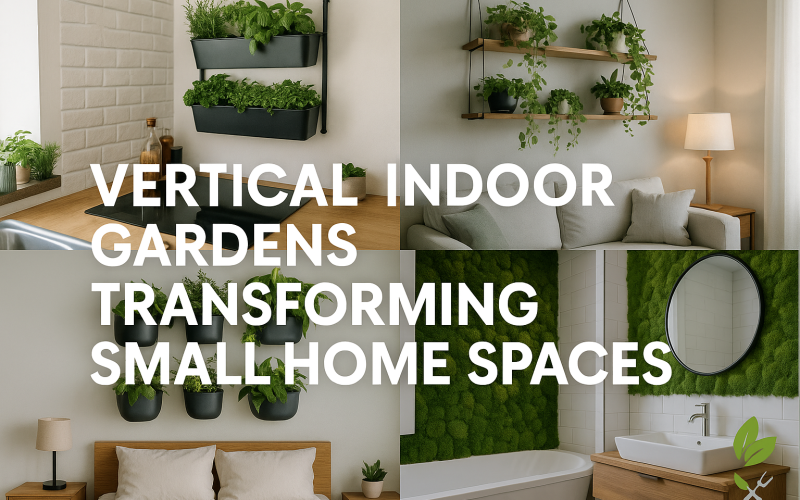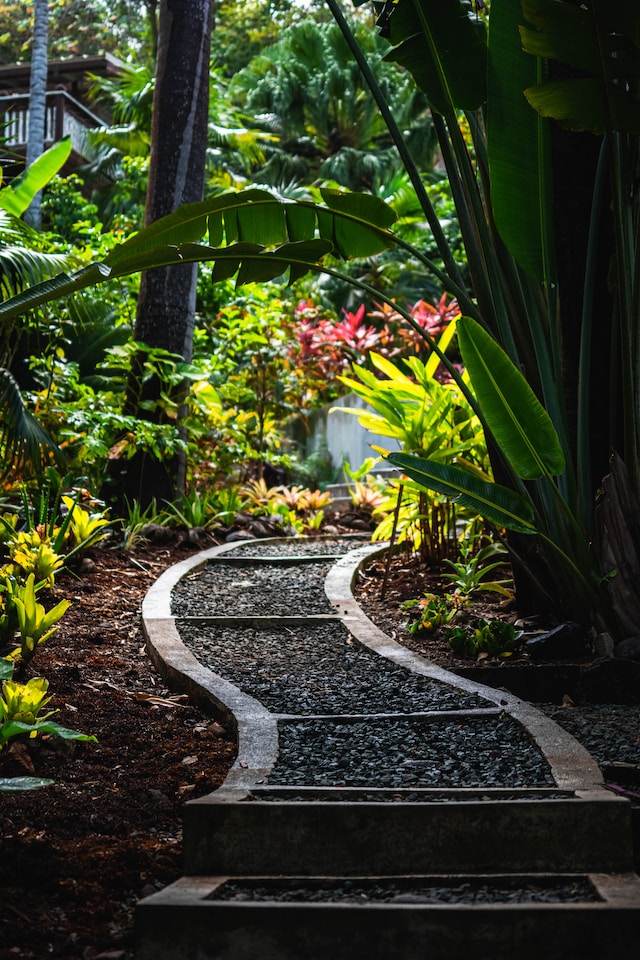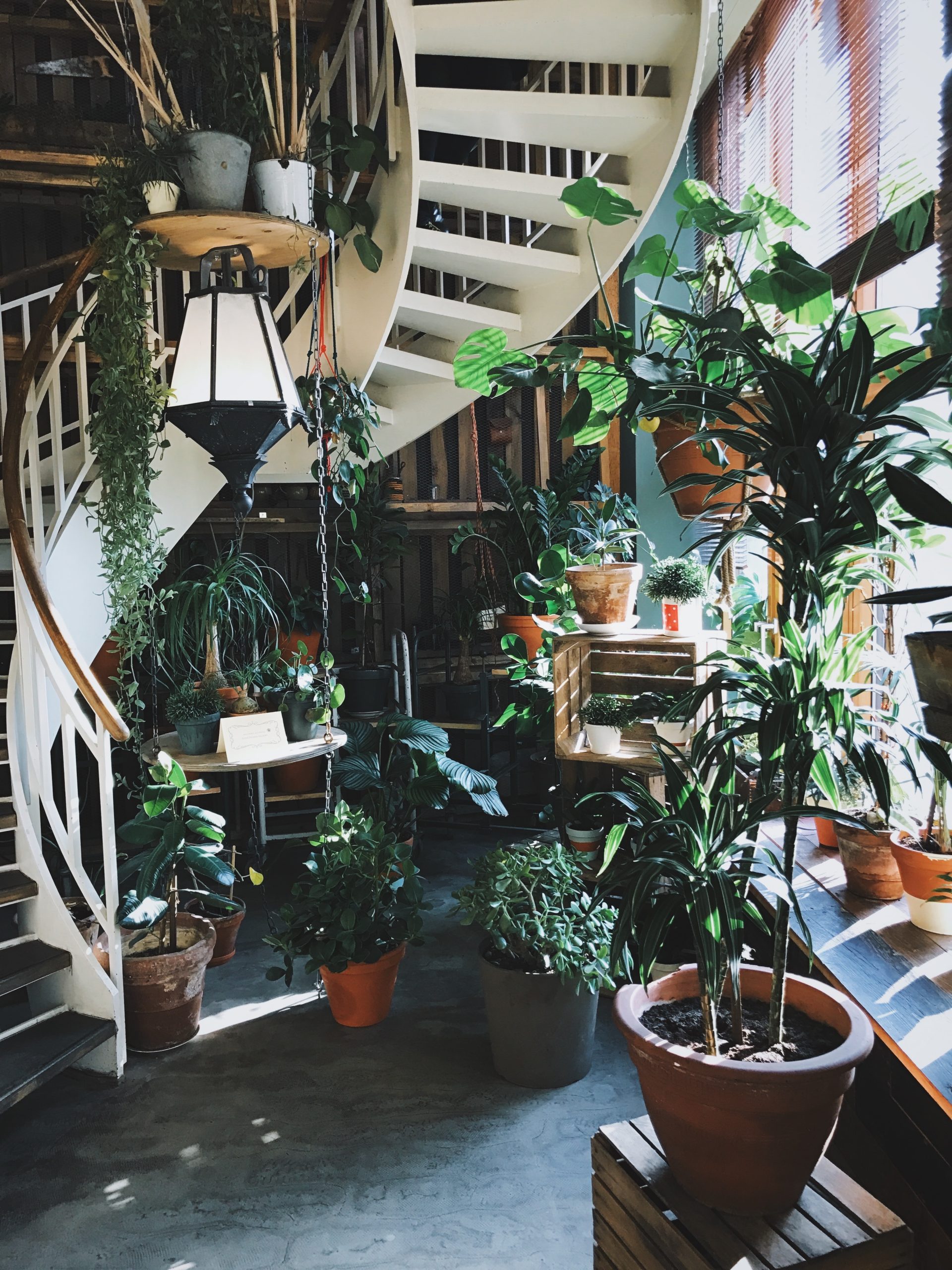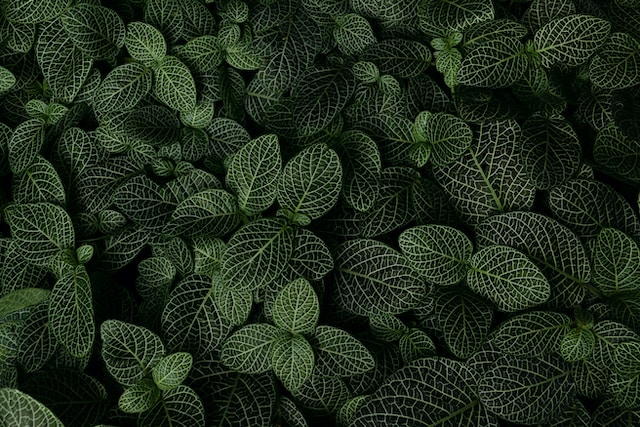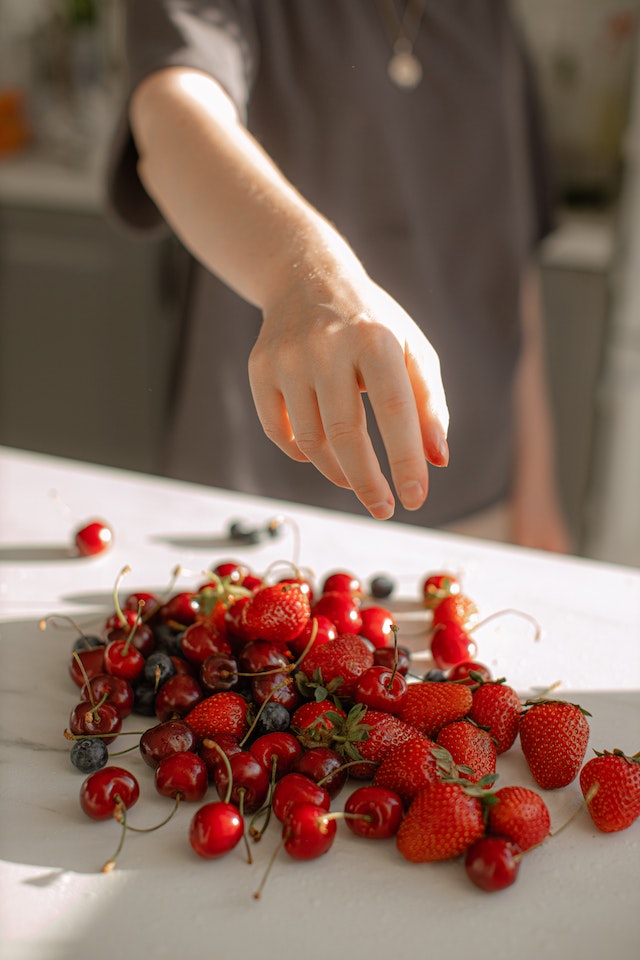Introduction
Urban living often means tight quarters and little green space. Yet many city dwellers crave the calm and beauty that plants bring. Enter vertical indoor gardens: living walls, planter towers, and hanging planters that let you grow lush greenery without giving up floor space. In 2025, these space-saving gardens are more versatile and user-friendly than ever. They clean the air, reduce stress, and even yield fresh herbs and veggies right in your living room. This guide dives into everything you need to know about vertical indoor gardens for small home spaces. We’ll cover what they are, the main types, how to pick the right plants, design and care tips, cost considerations, and the latest trends. By the end, you’ll be ready to transform your walls into vibrant vertical oases.
What Are Vertical Indoor Gardens?
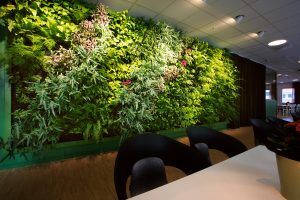
Vertical indoor gardens are systems that allow plants to grow upward instead of spreading out on the floor. They use walls, towers, or panels to stack planters in layers. This design makes the most of vertical space, freeing up your floors and counters. Walls once bare now burst with leaves, flowers, and even fruiting plants.
Definition and Core Concept
At its core, a vertical garden is simply plants arranged vertically. The system can be as simple as wall-mounted pots on rails or as high-tech as hydroponic towers that pump nutrient-rich water. All share the same goal: to maximize greenery in a small footprint. By shifting from horizontal beds to vertical structures, you can fit dozens of plants into a space just a few square feet wide.
Benefits of Going Vertical
Beyond saving space, vertical gardens offer multiple perks. They act as living artwork, adding texture and color to blank walls. The greenery helps filter indoor air, removing toxins and boosting oxygen levels. Studies show that plants reduce stress and improve mood and focus. For urban residents, a vertical garden can even provide fresh herbs and lettuces, cutting down grocery trips.
Types of Vertical Indoor Gardens
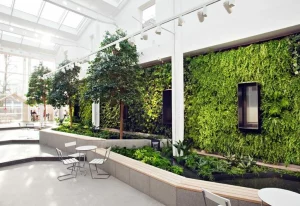
Vertical gardens come in many forms. Each suits different budgets, plant choices, and aesthetic goals.
Wall-Mounted Planters
The simplest option uses modular pots or pockets that attach directly to walls. You screw in a frame, slide in planters, and plant your favorites. These lightweight systems often use felt pockets or plastic trays. They work well for herbs, small ferns, and succulents in kitchens or bathrooms.
Freestanding Systems
Freestanding planter units look like slim bookshelves with built-in planters on each shelf. They can be placed against a wall or used as room dividers. Some models have wheels for easy repositioning. Freestanding systems suit renters who cannot drill into walls.
Hydroponic Towers
Hydroponic towers are tall columns where water and nutrients flow from top to bottom in a closed loop. Plants sit in slots around the tower. LED grow lights often surround the system, making it ideal for low-light apartments. Hydroponic setups grow plants faster and use less water than soil-based systems.
Living Wall Panels
Living wall panels, also called green walls, use tiles or modular panels pre-planted with vegetation. A built-in irrigation system keeps all plants watered evenly. Living walls can cover large areas, turning entire rooms into indoor jungles. They require professional installation and higher upfront costs but deliver a dramatic visual impact.
Choosing Plants for Vertical Gardens
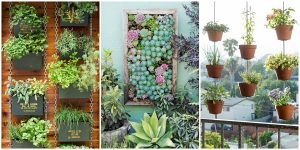
The right plants thrive in vertical setups and low to medium light conditions found indoors.
Low-Light Tolerant Plants
Many indoor walls lack direct sun. Plants like pothos, snake plant, and ZZ plant handle low light and irregular watering. Their hardy nature makes them perfect for wall planters or living panels.
Herbs and Edibles
Kitchens benefit from fresh herbs at arm’s reach. Basil, parsley, mint, and chives grow well in wall-mounted planters. Hydroponic towers can even host small lettuce heads and strawberries under LED lights, providing fresh greens year-round.
Air-Purifying Varieties
Fill your vertical garden with peace lilies, spider plants, and English ivy. These species excel at filtering formaldehyde, benzene, and other indoor toxins. A 2008 NASA study highlighted their ability to clean air, making them top picks for living walls.
Designing Your Vertical Garden
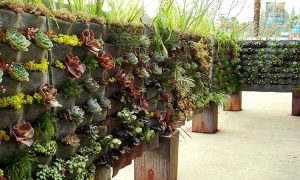
Good design blends form and function. Follow these steps to create a thriving green wall.
Assess Space and Light
Choose a wall that gets at least a few hours of natural light or install grow lights. Measure width and height to pick a system that fits. Ensure easy access for planting, pruning, and watering.
Plan Layout and Watering System
Sketch your plant arrangement. Place low-light varieties at the bottom and sun-loving ones at the top. Decide if you want manual watering via a drip tray or an automated irrigation kit. Automated systems save time and reduce guesswork.
Material and Container Selection
Plastic planters are lightweight and affordable. Metal frames add a modern look but weigh more. Felt pockets are breathable but may need more frequent watering. For a sleek design, choose matching containers and metal pipes painted to suit your decor.
Maintenance and Care Tips
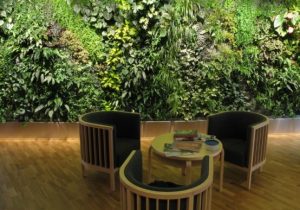
Proper upkeep ensures lush, healthy growth without mold or rot.
Watering and Drainage
Watering frequency depends on your system. Hydroponic towers run 24/7 circulation. Soil-based planters need weekly checks. Feel the soil; water when the top inch is dry. Ensure excess water drains into a catch tray to prevent wall damage.
Nutrient Management
Soil-based vertical gardens rely on slow-release fertilizer. Add balanced, water-soluble nutrients every month. Hydroponic towers use liquid nutrient solutions per the manufacturer’s schedule. Test water pH monthly to stay in the 5.5–6.5 range for most plants.
Pest Control
Indoor gardens can attract gnats or aphids. Keep plants healthy and remove dead leaves promptly. Use yellow sticky traps for gnats. For pests, spray a mild solution of dish soap and water or use neem oil.
Advantages for Small Home Spaces
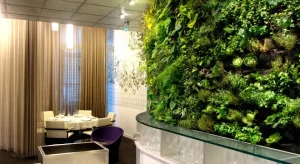
Vertical gardens turn challenges into advantages for small apartments and homes.
Space Efficiency
Floor space is at a premium in urban homes. A vertical garden uses unused wall space. You can have a dozen pots in a one-foot square area. This maximizes greenery without cluttering your living room or balcony.
Air Quality Improvement
Vertical plant walls act like natural air filters. The more surface area of leaves, the more clean air you produce. Even a small vertical garden can significantly boost indoor oxygen levels and reduce airborne dust and chemicals.
Aesthetic and Mental Health Benefits
Living walls bring nature indoors, softening hard edges of concrete and steel. Greenery lowers stress hormones and raises mood. Studies find that being near plants improves focus and creativity, making vertical gardens ideal for home offices and study areas.
DIY vs. Ready-Made Systems
Decide if you want a custom project or a plug-and-play solution.
DIY Options and Cost
DIY vertical gardens can use recycled pallets, PVC pipes, or hanging shoe organizers. Pallet gardens cost under fifty dollars in materials. They allow full control over design and plant mix. However, DIY systems often require more trial and error with watering and mounting.
Comparison of Popular Brands
Ready-made systems like GreenStalk, SkyGreens, and LiveWall range from $100 to $1,000. Brands offer warranties, modular expandability, and built-in irrigation. They save setup time but come at a premium. Evaluate warranty coverage and ease of assembly when choosing a kit.
Table: Comparison of Vertical Garden Systems
| System Type | Price Range | Max Height | Watering Style | Best For |
|---|---|---|---|---|
| DIY Pallet Garden | $30–$70 | 5 ft | Manual | Budget-friendly customization |
| GreenStalk Planter | $120–$150 | 4 ft | Drip Irrigation | Small patios and balconies |
| SkyGreens Hydro Tower | $200–$300 | 6 ft | Circulation Pump | Year-round indoor edibles |
| LiveWall Panel | $500–$1000+ | 8 ft | Automated Drip | Large living walls |
| Felt Pocket Planters | $50–$100 | 3 ft | Manual Drip | Light plants and herbs |
Cost and Budgeting
Vertical gardens can fit many budgets. A DIY pallet garden with recycled materials might cost under fifty dollars. Basic felt pocket kits range from fifty to one hundred. Mid-range hydroponic towers and freestanding planters cost $200 to $300. Premium living wall panels with automation run $500 to over $1,000. Factor in ongoing costs like nutrient solutions, potting mix, and electricity for grow lights. Automated systems save labor but add to the upfront price. Balance your budget with the amount of fresh produce or aesthetic value you seek.
Future Trends in Indoor Vertical Gardening
As technology and design advance, new trends will shape how we bring green walls into our homes.
Smart Irrigation and IoT Integration
Internet-connected sensors now monitor soil moisture and nutrient levels. They send alerts or trigger irrigation automatically. In 2025, many vertical systems will include companion apps for real-time monitoring and scheduling.
Sustainable Materials and Circular Design
Recycled plastics, bioplastics, and bamboo frames reduce environmental impact. Some brands offer take-back programs to refurbish and recycle aging planters. Expect more modular designs that let you replace only worn parts.
Biophilic Design Integration
Architects and interior designers are weaving green walls into overall space design. Vertical gardens serve as natural partitions, acoustic dampers, and humidity regulators. In 2025, we’ll see more co-living and co-working spaces turning entire corridors into living corridors.
Conclusion
Vertical indoor gardens offer a powerful solution for small home spaces. By going vertical, you save floor space, boost air quality, and lift your mood with living art. From DIY pallet setups to high-tech hydroponic towers and living wall panels, there’s an option for every budget and skill level. Choose plants that suit your light conditions—low light pothos, kitchen herbs, or air-purifying peace lilies. Plan your design carefully, set up proper irrigation, and maintain with the right nutrients. As vertical gardening evolves with smart sensors and sustainable materials, it will only get easier and greener. Transform your home walls into lush, productive green spaces and enjoy the many benefits they bring.
Call-to-Action
Ready to bring green into your home? Start your vertical indoor garden today with a simple DIY kit or explore advanced living wall systems. Turn your walls into thriving plant havens now!






